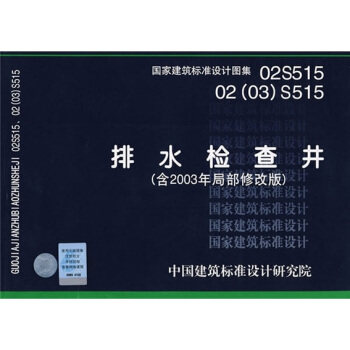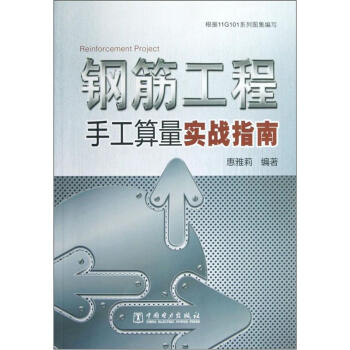具體描述
內容簡介
《中華人民共和國國傢標準:岩土錨杆與噴射混凝土支護工程技術規範(GB 50086-2015)》在編製過程中,編製組經廣泛調查研究,認真總結實踐經驗吸納成熟的新成果與新技術,參考國外先進標準,與國內相關標準協調,並在廣泛徵求意見的基礎上,最後經審查定稿。本規範共分14章和15個附錄,主要技術內容包括:總則、術語、工程勘察與調查、預應力錨杆、低預應力錨杆與非預應力錨杆、噴射混凝土、隧道與地下工程錨噴支護、邊坡錨固、基坑錨固、基礎與混凝土壩的錨固、抗浮結構錨固、試驗、工程監測與維護、工程質量檢驗與驗收等。 目錄
1總則
2術語
3工程勘察與調查
3.1一般規定
3.2調查
3.3工程地質與水文地質勘察
4預應力錨杆
4.1一般規定
4.2錨杆類型與構造
4.3錨杆類型的選擇
4.4材料
4.5防腐
4.6設計
4.7施工
5低預應力錨杆與非預應力錨杆
5.1一般規定
5.2低預應力錨杆類型與適用條件
5.3非預應力錨杆類型與適用條件
5.4材料
5.5錨杆設計
5.6錨杆施工
6噴射混凝土
6.1一般規定
6.2原材料
6.3設計
6.4施工
6.5質量控製與檢驗
6.6施工安全與粉塵控製
7隧道與地下工程錨噴支護
7.1一般規定
7.2圍岩分級
7.3一般條件下的錨噴支護設計
7.4特殊條件下的錨噴支護設計
7.5施工
8邊坡錨固
8.1一般規定
8.2邊坡錨固設計
8.3邊坡淺層加固與麵層防護
8.4邊坡錨固工程施工
8.5邊坡錨固工程的試驗與監測
9基坑錨固
9.1一般規定
9.2錨拉樁(牆)支護設計
9.3土釘牆支護設計
9.4施工與檢驗
10基礎與混凝土壩的錨固
10.1基礎錨固設計
10.2混凝土壩的錨固
10.3基礎與混凝土壩錨杆的施工、試驗與監測
11抗浮結構錨固
11.1一般規定
11.2抗浮預應力錨杆設計
11.3抗浮錨杆施工
12試驗
12.1預應力錨杆試驗
12.2噴射混凝土試驗
13工程監測與維護
13.1一般規定
13.2監測與檢查項目
13.3錨杆預加力的長期監測
13.4錨杆腐蝕狀況檢查分析
13.5工程安全狀態的預警值
13.6監測信息反饋和處理
14工程質量檢驗與驗收
14.1一般規定
14.2質量檢驗與驗收標準
14.3驗收
附錄A預應力錨杆結構圖
附錄B岩土錨杆與噴射混凝土支護工程施工記錄
附錄C荷載分散型錨杆的張拉鎖定方法
附錄D中空注漿錨杆結構參數與力學性能
附錄E隧洞洞室各級圍岩物理力學參數與岩體結構麵抗剪峰值強度
附錄F用瑞典條分法計算錨固邊坡的穩定性
附錄G腰梁與錨杆錨頭的構造形式
附錄H預應力錨杆基本試驗
附錄J錨杆蠕變量—時間對數關係麯綫
附錄K錨杆驗收試驗
附錄L噴射混凝土抗壓強度標準試塊製作方法
附錄M噴射混凝土粘結強度試驗
附錄N噴射混凝土抗彎強度與殘餘抗彎強度試驗
附錄P噴射鋼縴維混凝土殘餘抗彎強度(韌性)等級與殘餘彎麯應力
附錄Q土釘抗拔試驗方法
本規範用詞說明
引用標準名錄
附:條文說明
前言/序言
《深層地下空間錨固與噴射混凝土支護工程技術指南》 第一章 緒論 隨著城市化進程的加速和經濟的飛速發展,對地下空間的開發利用日益成為必然趨勢。從地下交通網絡、大型商業綜閤體到能源儲存設施,深層地下空間的建設規模與技術要求都在不斷提升。在這些復雜而關鍵的地下工程中,岩土錨固與噴射混凝土支護作為一種高效、經濟且適應性強的支護體係,扮演著至關重要的角色。它不僅能夠穩定開挖邊坡,有效防止圍岩失穩,為後續施工創造安全可靠的環境,還能在一定程度上利用岩體的自穩能力,實現經濟效益的最大化。 本指南旨在係統性地梳理和總結當前深層地下空間錨固與噴射混凝土支護工程領域的前沿理論、先進技術、典型案例及工程實踐經驗。其核心目標是為從事此類工程的設計、施工、監理及研究人員提供一份全麵、實用、可操作的技術參考,以期提升工程質量,保障施工安全,並推動該領域的技術進步。本指南覆蓋瞭從工程地質勘察、支護結構設計、材料選用、施工工藝、質量控製到監測與風險評估等各個環節,力求做到理論與實踐相結閤,兼顧規範性與創新性。 第二章 工程地質勘察與岩體性質分析 深入細緻的工程地質勘察是錨固與噴射混凝土支護工程成功的基石。本章將重點闡述在深層地下空間開發背景下,進行地質勘察時需要關注的關鍵要素和采取的勘探方法。 2.1 地層分布與岩性判斷 detailed study of stratigraphic distribution and lithological identification is crucial. This involves understanding the sequence of geological strata, their thickness, and characteristic physical and mechanical properties. For deep underground spaces, attention should be paid to identifying weak interlayers, fractured zones, and karstic formations, which can significantly impact the stability of the surrounding rock mass. Geological mapping, boreholes, and geophysical surveys (e.g., seismic refraction, electrical resistivity) are essential tools for this purpose. 2.2 岩體結構麵特徵分析 The mechanical behavior of rock masses is largely governed by the characteristics of their structural planes, such as joints, bedding planes, faults, and foliation. This section will detail methods for identifying and characterizing these discontinuities, including their orientation, spacing, persistence, aperture, infill material, and shear strength. Stereographic projection, scanline surveys, and borehole imaging techniques (e.g., optical televiewer, acoustic televiewer) are vital for analyzing the geometry and distribution of structural planes. 2.3 岩體物理力學參數測定 Accurate determination of the physical and mechanical properties of both intact rock and the rock mass is paramount for reliable design. This includes: Intact Rock Properties: Uniaxial compressive strength, tensile strength, elastic modulus, Poisson's ratio, and rock mass density. Laboratory testing of core samples is the standard method. Rock Mass Properties: While direct measurement of rock mass properties is challenging, they are often inferred from intact rock properties and structural plane characteristics using empirical or semi-empirical methods (e.g., RQD, RMR, GSI). Shear strength parameters (cohesion and friction angle) for both intact rock and discontinuities are particularly critical for stability analysis. 2.4 水文地質條件評價 Groundwater conditions can significantly influence the stability of rock masses and the effectiveness of anchoring and shotcrete. This section will cover methods for assessing groundwater pressure, flow patterns, and permeability. Hydrogeological surveys, pumping tests, and piezometer installations are essential for understanding the groundwater regime. Special attention will be given to the impact of groundwater on rock mass strength, pore water pressure build-up, and potential for frost heave in cold climates. 2.5 圍岩變形及穩定性評價 Based on the gathered geological and hydrogeological data, a comprehensive evaluation of the surrounding rock mass's deformation characteristics and inherent stability is conducted. This involves identifying potential failure mechanisms (e.g., planar sliding, wedge failure, toppling) and assessing the likelihood and magnitude of deformation under excavation loads. Numerical modeling techniques, such as finite element analysis and discrete element analysis, are increasingly used to simulate complex rock mass behaviors. 第三章 錨固支護體係設計理論與方法 錨固支護體係的設計是確保地下空間安全穩定開挖的關鍵環節。本章將深入探討錨固支護的設計理念、基本原理及詳細的設計流程。 3.1 錨固支護的設計理念與原則 The design philosophy for anchoring and shotcrete support in deep underground spaces emphasizes a holistic approach, integrating geotechnical understanding with structural engineering principles. Key design principles include: Ground Improvement: Anchors are primarily used to improve the in-situ strength and stiffness of the rock mass by prestressing and consolidating fractured zones, thereby mobilizing the rock mass's inherent support capacity. Load Transfer: The system is designed to effectively transfer the anticipated rock mass loads to stable ground or structures beyond the excavation zone. Composite Action: The combination of anchors and shotcrete forms a composite structure that enhances the overall stability and load-carrying capacity of the excavation face. Flexibility and Adaptability: The system should be flexible enough to accommodate variations in geological conditions and excavation geometries. Durability and Serviceability: The chosen materials and design must ensure the long-term performance and safety of the support system throughout the project lifecycle. 3.2 錨杆設計 This section will cover the detailed design aspects of rock anchors, including: Anchor Types: Discussion of different anchor types (e.g., mechanical anchors, grouted anchors, self-drilling anchors) and their suitability for various ground conditions and loading requirements. Anchor Spacing and Pattern: Determination of optimal anchor spacing and orientation based on rock mass characteristics, excavation dimensions, and anticipated loads. Design charts and empirical rules will be presented. Anchor Capacity Calculation: Methods for calculating the pull-out resistance and shear capacity of individual anchors, considering factors like bond strength, grout properties, rock strength, and installation quality. Limit equilibrium analysis and probabilistic methods will be discussed. Prestressing Requirements: Determination of required prestressing force for anchors to achieve effective ground reinforcement and to control deformation. Materials and Corrosion Protection: Selection of appropriate anchor materials (steel grade, surface treatment) and design of corrosion protection measures for long-term durability in aggressive environments. 3.3 噴射混凝土設計 The design of shotcrete involves considerations for its application and performance as a structural element: Shotcrete Thickness: Determining the required shotcrete thickness based on anticipated ground pressures, crack control, and protection against weathering and erosion. Reinforcement Design: If steel mesh or fibers are used as reinforcement within the shotcrete, this section will detail the design requirements for their placement, anchorage, and effectiveness in enhancing flexural strength and crack resistance. Adhesion and Bond Strength: Ensuring adequate adhesion between the shotcrete and the rock face, as well as between layers of shotcrete, is crucial. Durability and Material Properties: Selection of shotcrete mix design (cement type, aggregate size, admixtures) to achieve desired strength, workability, durability, and low rebound characteristics. 3.4 整體支護結構的穩定性分析 This section will focus on evaluating the overall stability of the combined anchor-shotcrete support system. This includes: Global Stability Analysis: Assessing the potential for large-scale failure modes, such as sliding along major geological discontinuities or rotational failures. Limit equilibrium methods (e.g., Bishop, Janbu) and numerical modeling will be presented. Local Stability Analysis: Evaluating the stability of individual excavation faces and the potential for localized failures between anchors. Deformation Analysis: Predicting the expected deformations of the excavation face and comparing them with acceptable limits. Interaction Analysis: Understanding the interaction between anchors, shotcrete, and the surrounding rock mass. 第四章 施工工藝與技術要點 本章將詳細闡述錨固與噴射混凝土支護工程的施工工藝,並重點突齣關鍵技術環節和質量控製要點。 4.1 錨杆施工工藝 This section will detail the step-by-step process for installing rock anchors, covering various types: Drilling: Techniques for drilling anchor holes, including selection of drill bits, drilling fluids, and drilling parameters to achieve accurate hole size, alignment, and depth while minimizing rock damage. Special considerations for drilling through fractured or weak ground. Cleaning: Thorough cleaning of anchor holes is critical for ensuring good bond with the grout. Methods for flushing and air purging will be discussed. Grouting (for grouted anchors): Techniques for grout mixing, injection pressure and volume control, and curing. The importance of grout properties (e.g., fluidity, setting time, strength) will be highlighted. Installation of Mechanical Anchors: Proper procedures for installing mechanical anchors to ensure their secure anchorage. Tensioning (Prestressing): Procedures for applying the specified prestressing force to the anchors using hydraulic jacks and load cells, ensuring controlled and uniform tensioning. Bond Length and Anchorage: Ensuring the integrity of the bond between the anchor bar and the grout, and the grout and the rock mass. 4.2 噴射混凝土施工工藝 This section will cover the techniques for applying shotcrete effectively and efficiently: Surface Preparation: Cleaning the rock surface to remove loose material, dust, and debris to ensure proper adhesion of the shotcrete. Mix Design and Quality Control: Ensuring the shotcrete mix meets specified requirements for workability, strength, durability, and rheology. On-site batching and quality control procedures. Application Techniques: Techniques for both wet-mix and dry-mix shotcrete application, including nozzle operation, standoff distance, angle of application, and layer thickness control. Reinforcement Placement: Proper placement and anchorage of steel mesh or fiber reinforcement within the shotcrete layers. Curing: Ensuring adequate curing of the shotcrete to achieve its design strength and durability, especially in challenging environmental conditions. 4.3 關鍵施工技術與難點處理 This section will address specific challenges encountered in deep underground excavations and provide solutions: Construction in Adverse Geological Conditions: Techniques for excavating and supporting in areas with highly fractured rock, weak layers, squeezing ground, or significant groundwater inflow. Groundwater Control: Methods for managing groundwater during excavation and support installation, including drainage, sealing, and temporary dewatering. Overbreak and Underbreak Control: Techniques to minimize overbreak during excavation and ensure adequate shotcrete coverage. Construction Sequence Optimization: Planning and executing the construction sequence to minimize exposure time of unsupported ground and maximize the effectiveness of the support system. Quality Assurance and Control: Establishing robust QA/QC procedures throughout the construction process to ensure that all aspects of the anchoring and shotcrete application meet design specifications. This includes regular inspections, material testing, and performance monitoring. 第五章 監測、評估與風險管理 5.1 監測體係設計與實施 A comprehensive monitoring program is essential for verifying the performance of the support system and detecting potential issues in real-time. This section will outline: Instrumentation Selection: Types of instruments used for monitoring, including convergence monitoring (extensometers, tape extensometers), stress monitoring (load cells, strain gauges), pore water pressure measurement (piezometers), and displacement monitoring (surveying, inclinometers). Monitoring Program Design: Determination of monitoring locations, frequency, and duration based on project phases, geological conditions, and risk assessment. Data Acquisition and Analysis: Procedures for collecting, processing, and analyzing monitoring data to identify trends, anomalies, and potential stability problems. 5.2 監測數據分析與評估 Interpreting monitoring data is crucial for making informed decisions. This will cover: Performance Assessment: Comparing measured deformations and stresses with design predictions and acceptable limits. Identification of Anomalies: Recognizing deviations from expected behavior that may indicate potential instability or inadequate support performance. Feedback to Design and Construction: Using monitoring results to adjust support designs, construction methods, or implement remedial measures. 5.3 風險評估與應急預案 Proactive risk management is vital for deep underground construction. This section will address: Hazard Identification: Identifying potential hazards associated with anchoring and shotcrete support, such as anchor failure, shotcrete delamination, excessive deformation, and ingress of groundwater. Risk Assessment: Evaluating the likelihood and consequences of identified hazards. Development of Mitigation Measures: Implementing preventative measures to reduce the identified risks. Emergency Response Planning: Developing detailed emergency procedures and contingency plans to address unforeseen events and ensure the safety of personnel and the structure. 第六章 典型工程案例分析 本章將通過分析幾個具有代錶性的深層地下空間錨固與噴射混凝土支護工程案例,來具體展示本指南中介紹的理論、方法和技術在實際工程中的應用情況。案例將涵蓋不同地質條件、不同支護規模及不同工程類型的項目,重點分析其設計思路、施工難點、解決方案以及最終的工程效果,以期為讀者提供更直觀的理解和藉鑒。 第七章 結論與展望 本指南係統地梳理瞭深層地下空間錨固與噴射混凝土支護工程的關鍵技術和實踐要點。通過對工程地質勘察、設計理論、施工工藝、監測評估及風險管理等方麵的深入探討,旨在為該領域的工程實踐提供有力的技術支撐。展望未來,隨著新材料、新工藝和新技術的不斷湧現,深層地下空間錨固與噴射混凝土支護技術將朝著更智能化、更環保、更高效的方嚮發展,為城市可持續發展和地下空間的深度開發貢獻更大的力量。
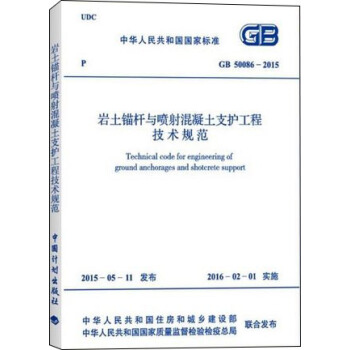



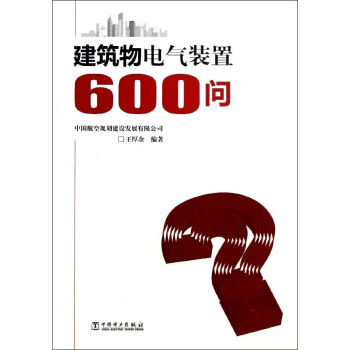
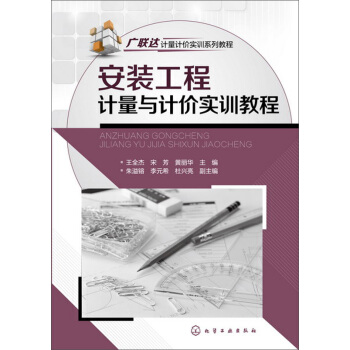
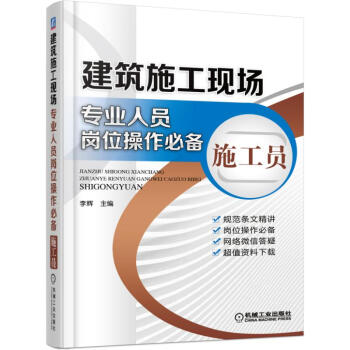
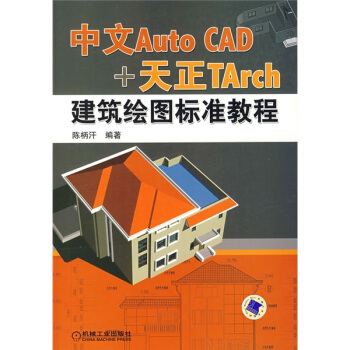
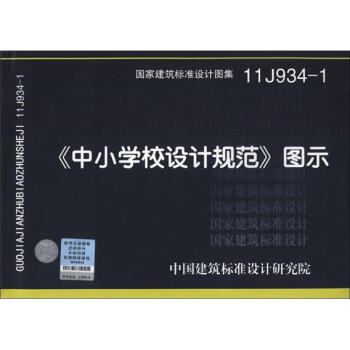
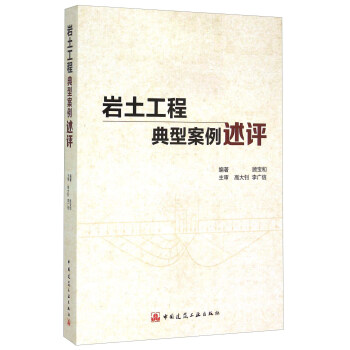

![中華人民共和國行業標準(JGJ367-2015):住宅室內裝飾裝修設計規範 [Gode for Design of the Resudential Interior Edcoration] pdf epub mobi 電子書 下載](https://pic.tinynews.org/11826031/5683a46bNb7e15a69.jpg)


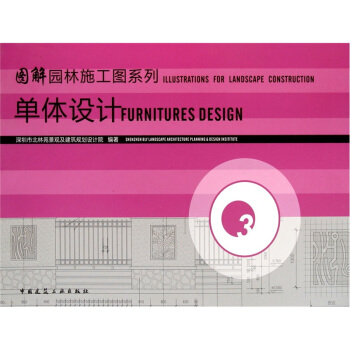
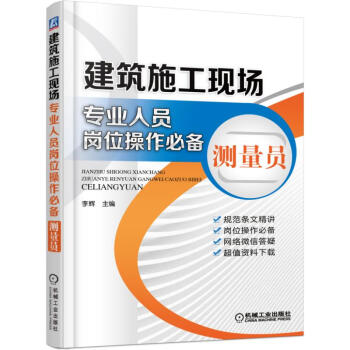

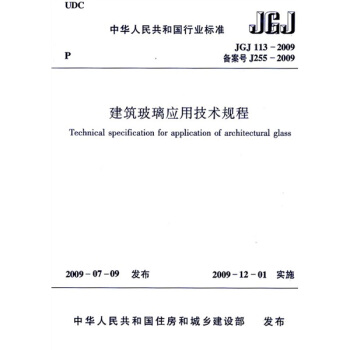
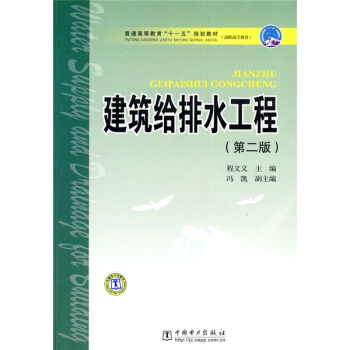
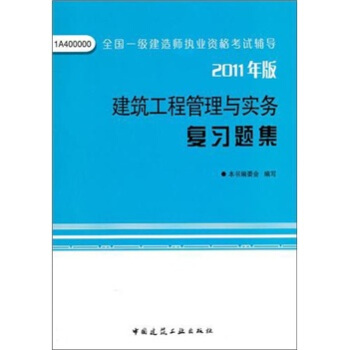
![中華人民共和國行業標準(JGJ 55-2011·備案號J 64-2011):普通混凝土配閤比設計規程 [Specification for Mix Proportion Design of Ordinary Concrete] pdf epub mobi 電子書 下載](https://pic.tinynews.org/10827204/6499318c-83ee-47d4-a1df-a61ab13e6c9c.jpg)
